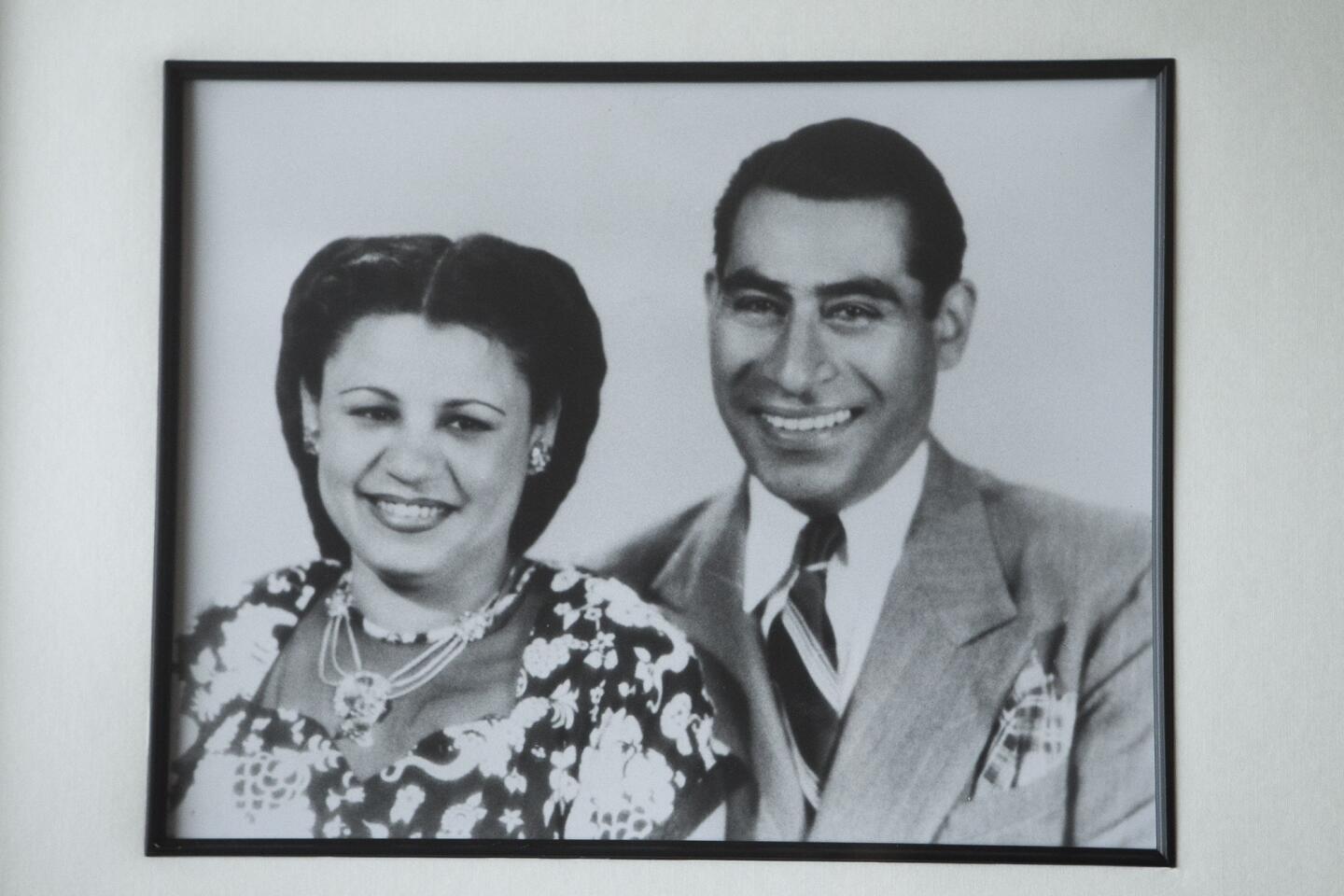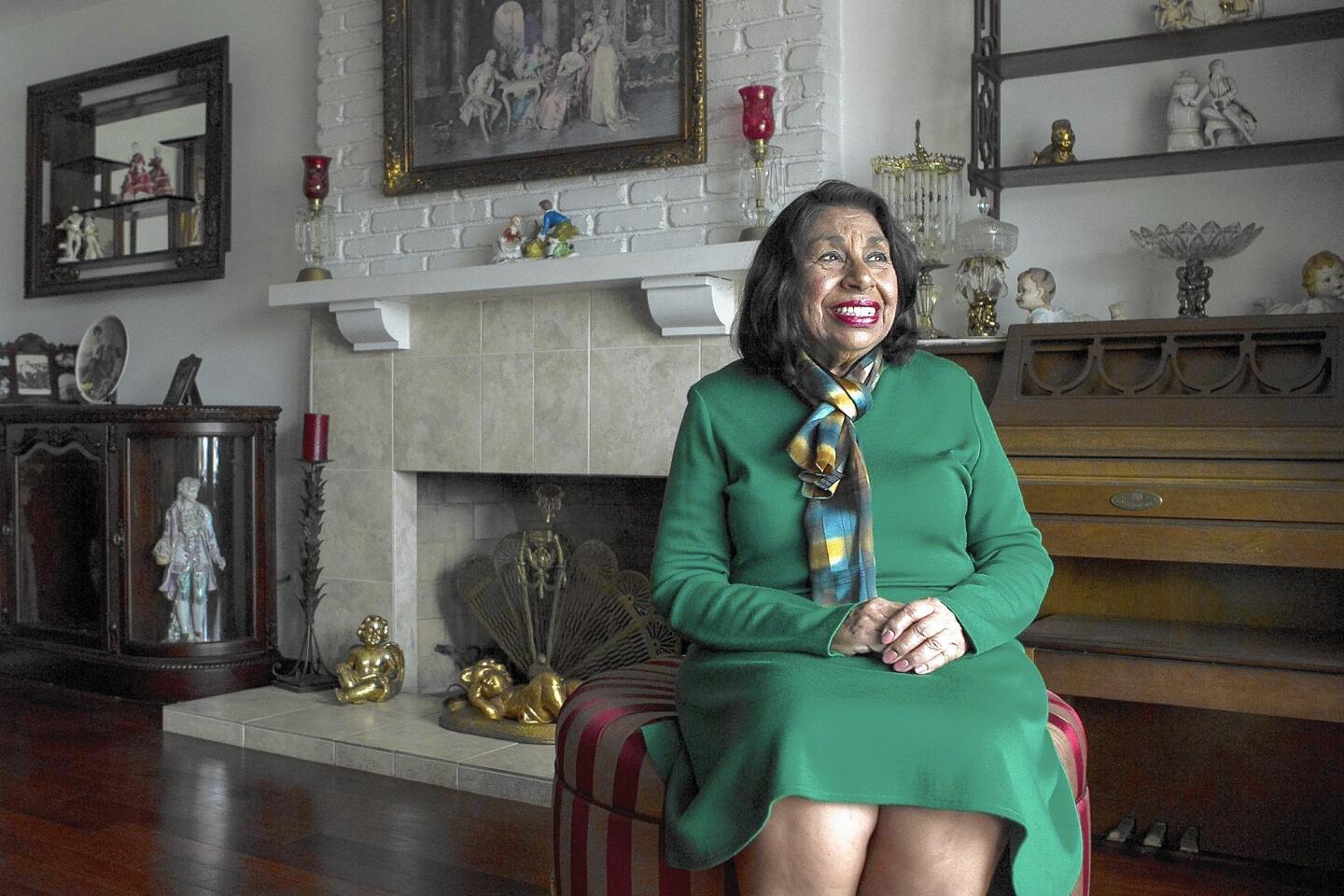How O.C. parents laid the groundwork for school desegregation in the U.S.

Mistala Mendez Mooney, left, and her aunt Sylvia Mendez at a 2007 event marking the 60th anniversary of Mendez vs. Westminster. Sylvia Mendez’s parents fought for racial equality.
- Share via
As a child, Sylvia Mendez thought her parents’ court case was all about a playground.
That’s because in 1944, the bus would drop her off at the white school with the “beautiful playground.” But she would have to keep walking down the street to the Mexican school — two wooden shacks on a dirt lot next to a cow pasture.
“We went to court every day. I listened to what they were saying, but really I was dreaming about going back to that beautiful school,” Mendez said.
What Gonzalo and Felicitas Mendez were fighting for was racial equality.
The family won the landmark case Mendez, et al vs. Westminster School District of Orange County, et al — laying the groundwork for school desegregation throughout California and the nation.
Sylvia Mendez, now 79, is a fierce advocate of her parents’ legacy, traveling the country to tell a story that weaves together historic figures such as Thurgood Marshall and Earl Warren and events including the internment of Japanese Americans during World War II and the Brown vs. Board of Education Supreme Court decision.
“This is the history of the United States, the history of California,” she said. “Mendez isn’t just about Mexicans. It’s about everybody coming together. If you start fighting for justice, then people of all ethnicities will become involved.”
In the 1940s, Orange County’s public parks, swimming pools, restaurants and movie theaters all were segregated, said Gilbert Gonzalez, professor emeritus of Chicano/Latino studies at UC Irvine. Houses often had restricted covenants, stipulating that they could only be resold to whites. And so-called Mexican schools were designed to Americanize the students — speaking Spanish was prohibited — and to train boys
for industrial work and agricultural labor and girls for housekeeping.
“We weren’t taught how to read and write,” Mendez said. “We were taught home economics, how to crochet and knit.”
In 1930, a group of Mexican parents in San Diego County had sued the Lemon Grove School District for forcing their children into segregated schools. The parents won in the first successful school desegregation case in U.S. history. But the Lemon Grove Incident, as it came to be known, didn’t carry legal precedent for the rest of California.
When the Mendez family moved to Westminster in 1944 — leasing a farm owned by a Japanese American family that had been put in an internment camp — the children were turned away from the nearby 17th Street School. Thinking there had been a mistake, Gonzalo Mendez went to talk with the principal.
“He said, ‘I’m sorry, Mr. Mendez, we don’t have Mexicans here,’ ” Sylvia Mendez recalled. “Then he went to the superintendent of schools for Orange County, and he said, ‘Mr. Mendez, four cities, Garden Grove, Santa Ana, Orange and Westminster, have built two schools, one specifically for Mexicans, and they have to go to that school. I do not have the power to change it.’ ”
‘Don’t you know what we were fighting? We weren’t fighting so you could go to that beautiful white school. We were fighting because you’re equal to that white boy.’
— Sylvia Mendez, recalling her mother’s words on her first day at the white school in Santa Ana
The campus she and her siblings were forced to attend was terrible, Mendez said. The books were “hand-me-downs” and the desks were “all falling apart.” An electric fence separated the school from a cow pasture.
After reading about a successful Riverside desegregation case that challenged the rules barring Mexicans from public parks, Gonzalo Mendez hired civil rights attorney David Marcus.
See more of our top stories on Facebook >>
“Let’s not do this just for your children. Let’s do it for all the children,” Sylvia recalled Marcus telling her father. Gonzalo Mendez drove Marcus around Orange County looking for other plaintiffs who could join him in a class-action suit. Four others got on board — Lorenzo Ramirez from Orange, Frank Palomino from Garden Grove and William Guzman and Thomas Estrada from Santa Ana.
The case, which argued that the four segregated school districts violated the 14th Amendment’s guarantee of equal protection, attracted attention outside Orange County. Thurgood Marshall, at the time the chief counsel for the NAACP Legal Defense and Educational Fund, wrote an amicus brief in support of Mendez. The Japanese American Citizens League, the League of United Latin American Citizens, the American Jewish Congress and the American Civil Liberties Union lent their support.
In 1946, Mendez won.
Some schools in Orange County started to desegregate. In Westminster, Sylvia Mendez said, schools were integrated by placing all the older children in the Mexican school and the younger children in the white school. “The white people got so upset to see their children in that horrible school, so they went to the superintendent and they closed it down,” she said.
A year later, the ruling was upheld in federal court and, within months, Gov. Earl Warren signed legislation to desegregate California’s schools — becoming the first state in the country to do so.
Mendez vs. Westminster would have nationwide ramifications.
The NAACP, which called Mendez a “dry run for the future,” used much of the same legal reasoning in 1954 in Brown vs. Board of Education, the landmark case that declared state laws establishing separate public schools for black and white students to be unconstitutional. Marshall argued the case before the Supreme Court, which by then included Chief Justice Warren, who wrote the unanimous decision that “separate educational facilities are inherently unequal.”
Sylvia Mendez went on to graduate from Santa Ana College; she worked as a registered nurse for 33 years.
In 2000, a new high school in Santa Ana was named after the family — the Gonzalo and Felicitas Mendez Fundamental Intermediate School. In 2007, the U.S. Postal Service issued a stamp commemorating the case. And in 2011, Sylvia was awarded the Presidential Medal of Freedom by President Obama.
“When I got it I couldn’t stop crying, because I was thinking finally my mother and father are getting the thanks they deserve,” Mendez said.
Kandil writes for Times Community News. This story originally ran online on April 17 in the Weekend section
MORE EDUCATION NEWS
The cost of L.A. Unified’s digital student tracking system rises to $189 million
USC president’s aim in teaching a classics course is to ‘light a fire’ for humanities
Learning English can be hard. This experimental new program tries to make it easier
More to Read
Sign up for Essential California
The most important California stories and recommendations in your inbox every morning.
You may occasionally receive promotional content from the Los Angeles Times.














